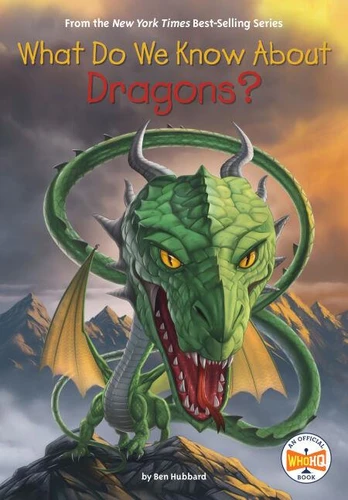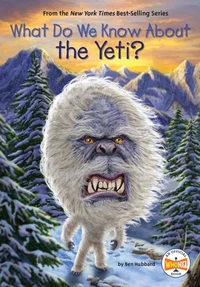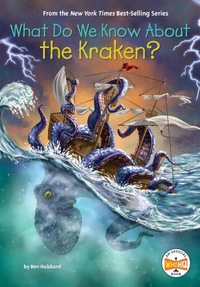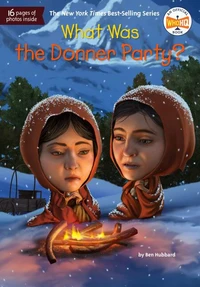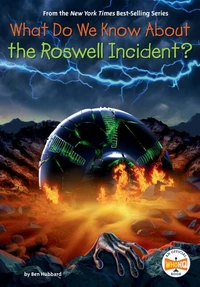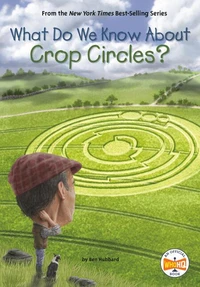What Do We Know About Dragons?
Par : ,Formats :
Actuellement indisponible
Cet article est actuellement indisponible, il ne peut pas être commandé sur notre site pour le moment. Nous vous invitons à vous inscrire à l'alerte disponibilité, vous recevrez un e-mail dès que cet ouvrage sera à nouveau disponible.
Disponible dans votre compte client Decitre ou Furet du Nord dès validation de votre commande. Le format ePub protégé est :
- Compatible avec une lecture sur My Vivlio (smartphone, tablette, ordinateur)
- Compatible avec une lecture sur liseuses Vivlio
- Pour les liseuses autres que Vivlio, vous devez utiliser le logiciel Adobe Digital Edition. Non compatible avec la lecture sur les liseuses Kindle, Remarkable et Sony
- Non compatible avec un achat hors France métropolitaine
 , qui est-ce ?
, qui est-ce ?Notre partenaire de plateforme de lecture numérique où vous retrouverez l'ensemble de vos ebooks gratuitement
Pour en savoir plus sur nos ebooks, consultez notre aide en ligne ici
- Nombre de pages112
- FormatePub
- ISBN8217050369
- EAN9798217050369
- Date de parution03/03/2026
- Protection num.Adobe DRM
- Infos supplémentairesepub
- ÉditeurPenguin Workshop
Résumé
The What Do We Know About? series explores the mysterious, the unknown, and the unexplained. Are dragons fact or legend? Find out everything we know about the history of these magical and mythical creatures. Are dragons winged, fire-breathing beasts or water gods who promise good luck? Across the globe, legends of dragons have varied greatly. Stories and images of dragons can be traced back to the ancient worlds of Mesopotamia, Egypt, Greece, and Rome.
In many East and Southeast Asian cultures, dragons were considered friendly, serpent-like creatures, but in Western cultures, they were ferocious, feared, and monstrous. Were dragons slayed by knights in medieval Europe? Or did they bring promises of plentiful rain in Japanese folklore? Both! These are just two examples of historic dragon lore. Today, dragons are in their golden age. They are featured in literature, games, movies, and television and have never been more popular.
How to Train Your Dragon shows them as peaceful companions to humans. The Hobbit uses a dragon as a clever and cruel villain. From Norway to Korea, send your curiosity into flight and learn all we know about these mysterious creatures in this exciting book for young readers!
In many East and Southeast Asian cultures, dragons were considered friendly, serpent-like creatures, but in Western cultures, they were ferocious, feared, and monstrous. Were dragons slayed by knights in medieval Europe? Or did they bring promises of plentiful rain in Japanese folklore? Both! These are just two examples of historic dragon lore. Today, dragons are in their golden age. They are featured in literature, games, movies, and television and have never been more popular.
How to Train Your Dragon shows them as peaceful companions to humans. The Hobbit uses a dragon as a clever and cruel villain. From Norway to Korea, send your curiosity into flight and learn all we know about these mysterious creatures in this exciting book for young readers!
The What Do We Know About? series explores the mysterious, the unknown, and the unexplained. Are dragons fact or legend? Find out everything we know about the history of these magical and mythical creatures. Are dragons winged, fire-breathing beasts or water gods who promise good luck? Across the globe, legends of dragons have varied greatly. Stories and images of dragons can be traced back to the ancient worlds of Mesopotamia, Egypt, Greece, and Rome.
In many East and Southeast Asian cultures, dragons were considered friendly, serpent-like creatures, but in Western cultures, they were ferocious, feared, and monstrous. Were dragons slayed by knights in medieval Europe? Or did they bring promises of plentiful rain in Japanese folklore? Both! These are just two examples of historic dragon lore. Today, dragons are in their golden age. They are featured in literature, games, movies, and television and have never been more popular.
How to Train Your Dragon shows them as peaceful companions to humans. The Hobbit uses a dragon as a clever and cruel villain. From Norway to Korea, send your curiosity into flight and learn all we know about these mysterious creatures in this exciting book for young readers!
In many East and Southeast Asian cultures, dragons were considered friendly, serpent-like creatures, but in Western cultures, they were ferocious, feared, and monstrous. Were dragons slayed by knights in medieval Europe? Or did they bring promises of plentiful rain in Japanese folklore? Both! These are just two examples of historic dragon lore. Today, dragons are in their golden age. They are featured in literature, games, movies, and television and have never been more popular.
How to Train Your Dragon shows them as peaceful companions to humans. The Hobbit uses a dragon as a clever and cruel villain. From Norway to Korea, send your curiosity into flight and learn all we know about these mysterious creatures in this exciting book for young readers!

